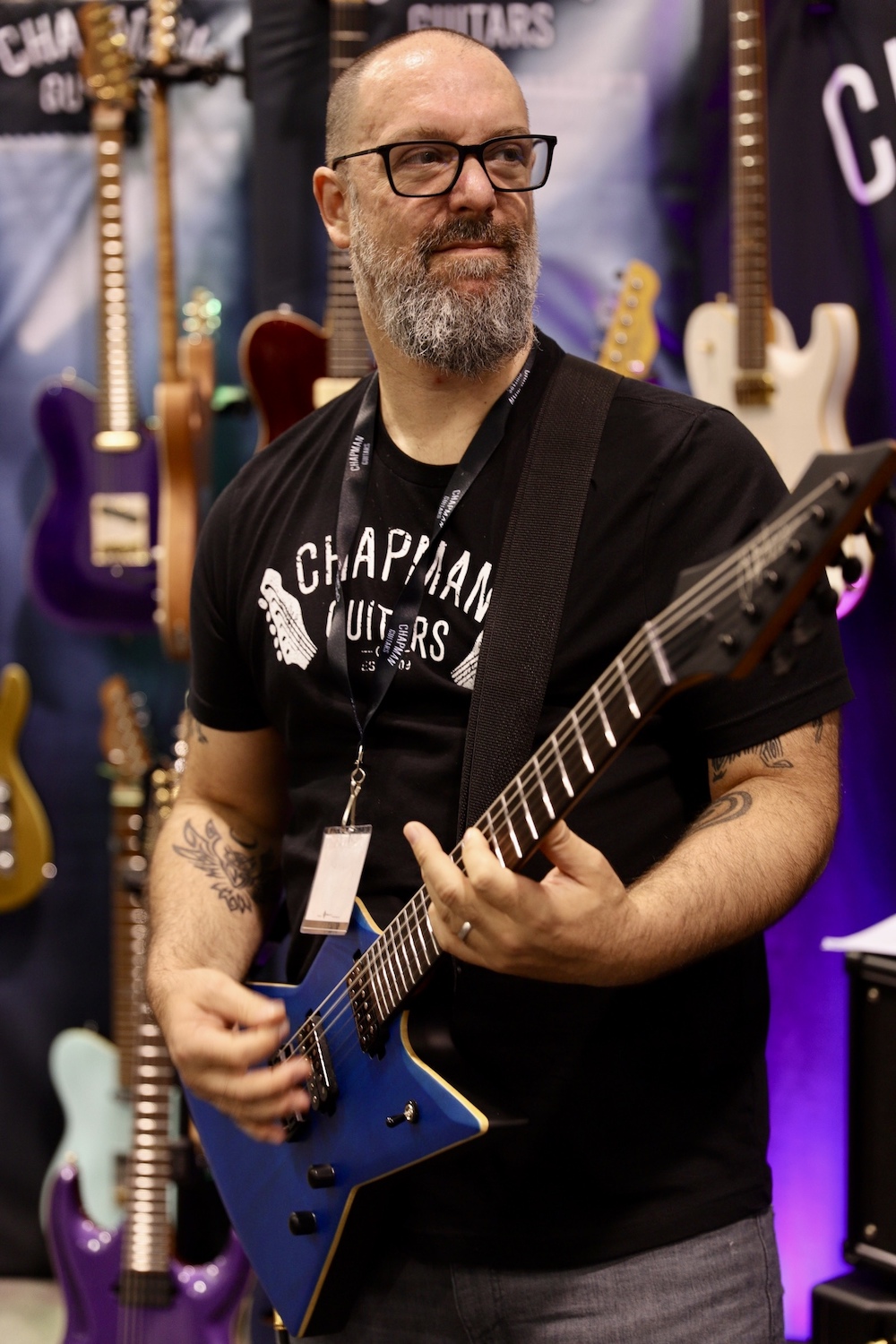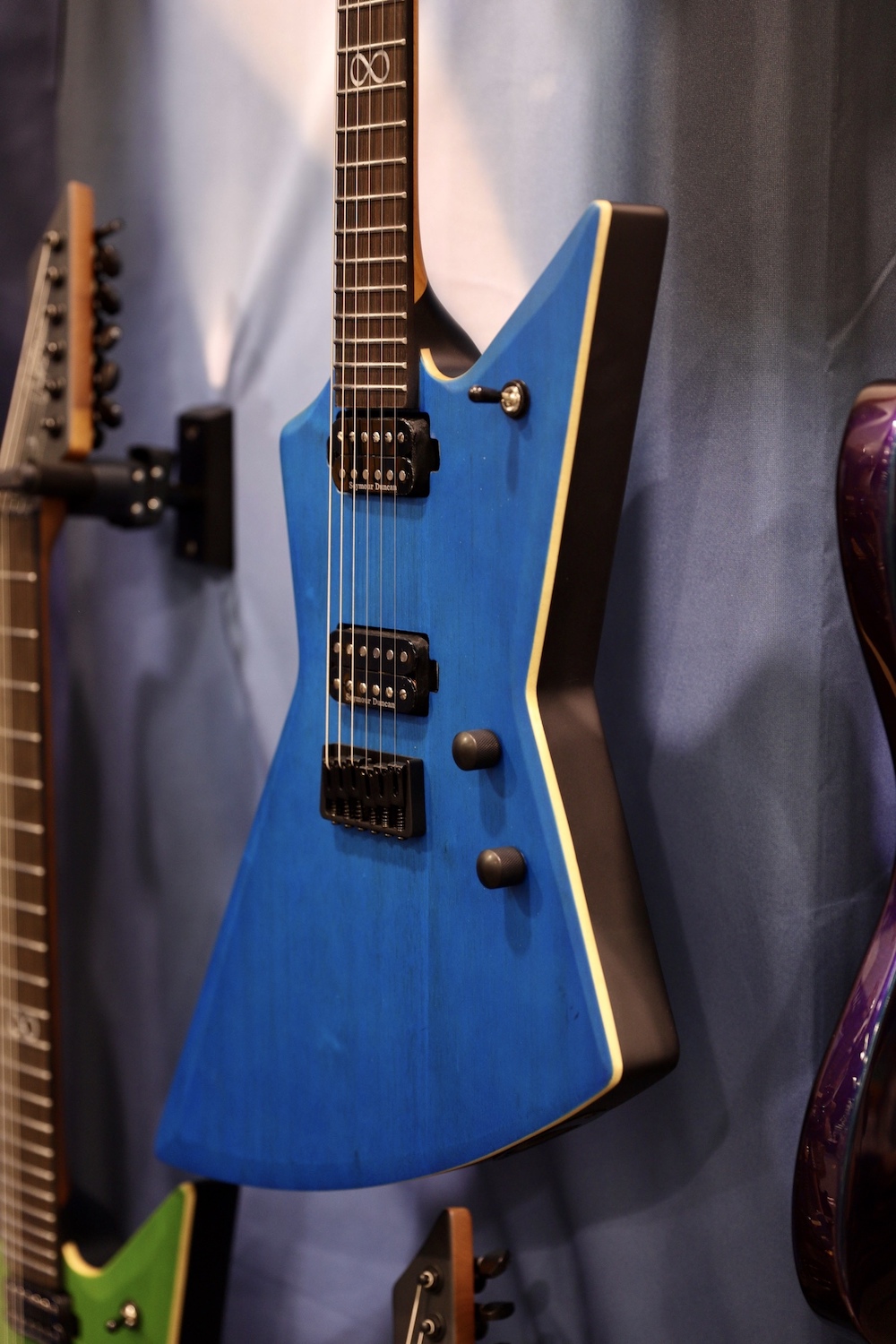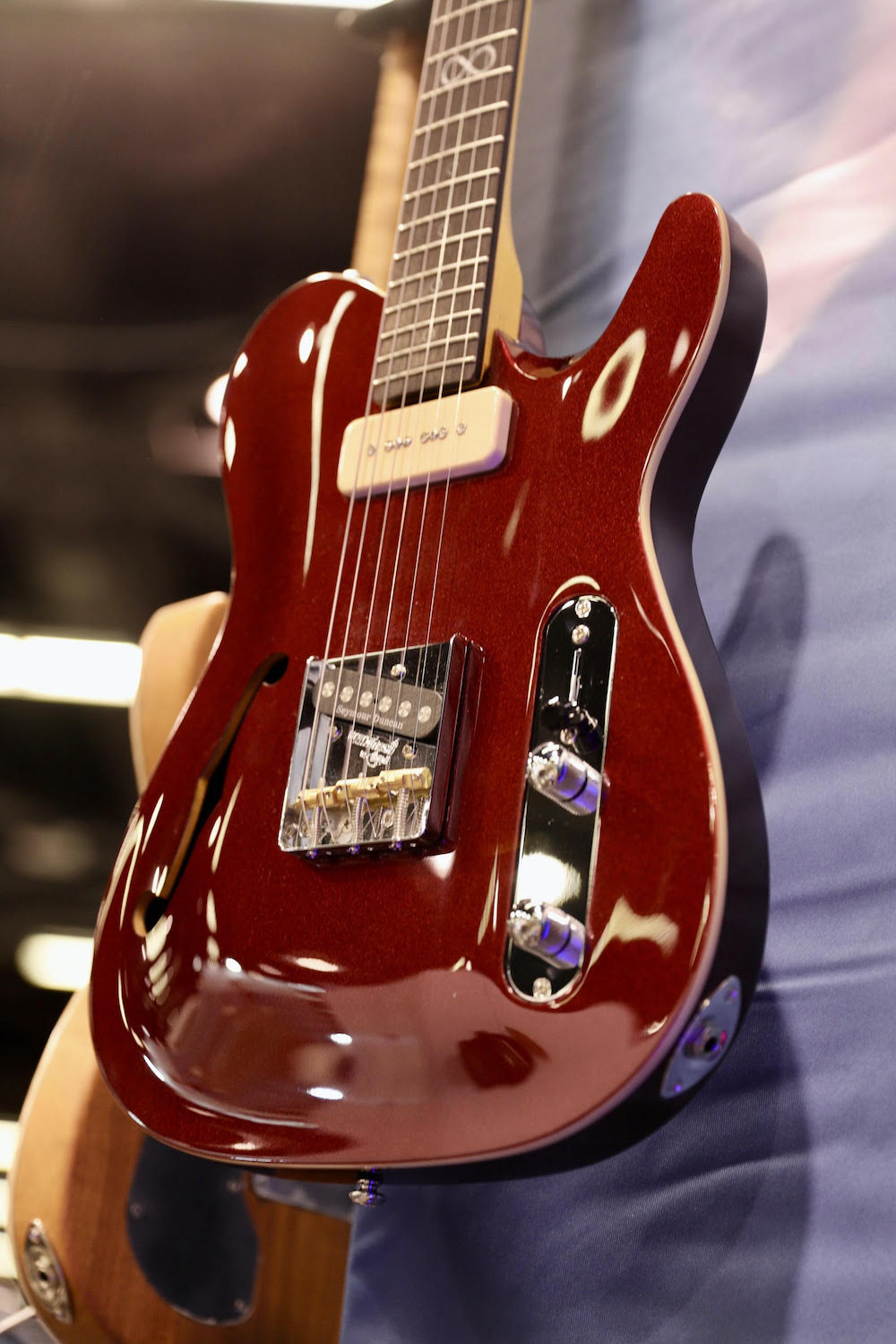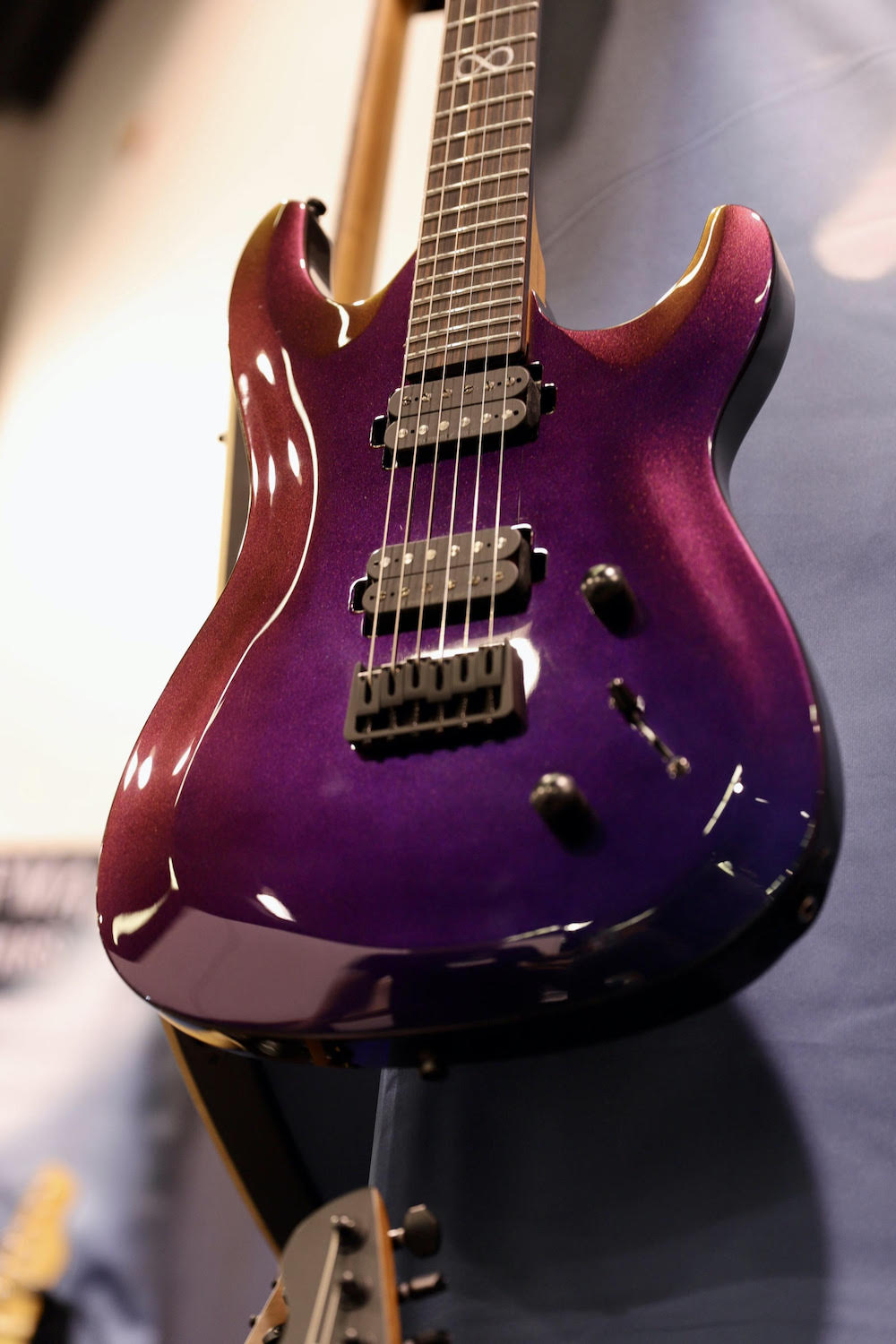Meet Rob Chapman: a guitar virtuoso, YouTuber, and founder of Chapman Guitars. He started playing guitar at the age of 16 and quickly developed a passion for it. After playing in several bands and honing his craft, Chapman started his own YouTube channel, where he shares his expertise and love for music with his followers.
In 2009, Chapman founded his own guitar company, Chapman Guitars, looking to create high-quality instruments at an affordable price point. Today, the company has grown into a global brand with over a decade of experience in the guitar-making industry. Now, Chapman is a household name among guitar enthusiasts.
We had the pleasure of sitting down with Chapman to talk about his unique position as a touring musician who runs a guitar company, his approach to innovation, and his plans for the future.
How has your experience as a touring musician influenced your approach to designing and manufacturing guitars?
Early on in our existence, I had a conversation with the Korean factory we were using at the time about anything we could do to make our guitars better. The guy I was working with said that some new stuff was coming out that we could try and incorporate but warned me that it was very new. It was stainless steel frets and baked maple necks, which was a technology that wasn't really being integrated into guitars back then. I'm talking years ago. And I said, "Just go for it. Let's just do it. Make some prototypes."

So we made a number of guitars, one of which was a semi-hollow T-type called the ML3 Semi-Hollow. It's one of the best guitars we ever made. I love that guitar and as chance would have it, I had a clinic tour coming up at the time. I took it to Australia and did a whole American tour for weeks. What struck me halfway through the American tour was that I'd gone from Asia to Australasia to North America—not just different sorts of temperatures, but different environments.
I was going through some super moist climates and some super hot humid places, and then some really dry, arid places and nothing happened. The neck didn't move a millimeter. Where I set it with the truss, it just stayed. And so through playing this clinic tour, I was able to say baking a neck is a really good idea because it provides stability.
So my playing tests the product that we make, and it has to, because if I play something and I don't like it, we're not gonna make it just a waste of time. I could never promote an instrument or play it live that I didn't like. I feel like a complete liar. And with my family name on the headstock, my integrity is important to keep intact.
Have you also had situations where you were on tour or at a gig and noticed that something that you guys were trying out was really not going to work out because you personally had an issue with it?
Yes! With the very first guitar we made, the ML1, I wanted to put all sorts of bells and whistles in it. And the first guitar we ever made was manufactured in China. I have nothing against Chinese manufacturing, but in this instance, there were some things that they skimped on and the toggle switch was one of them.
The toggle switch, a three-way because I just wanted it really simple, was affordable. And midway through a tour, it just snapped off on my guitar. So my tech wrapped electrical tape around the remaining stub and I had to sort of move this thing around bloody-fingered while I was playing.

Then we were using this shadow kill pot built into the tone control. I really liked the idea of having a kill pot, except that it wasn't non-latching. So in a way, it just turned it off, so I couldn't get a musical effect from this piece of gear. It was just a thing that turned the guitar off, but then so did the tuning pedal, so what was the point? It was just a waste of money on the design, so I got rid of that and we never used it an ML1 again.
But the weight is also a thing. Two tours in with Dorje, we were playing with The Drills with Phil X and I turned to Rabea and said, "Man, you know, these guitars, they don't get any lighter each night. I'm not getting any younger." And he agreed that the ML1 and ML2 were heavy. We were using mahogany in the bodies, and at the time, I was going through this whole concept of anything that you wouldn't upgrade we make expensive, and anything that you would potentially want to upgrade we would make as affordable as possible so that you could just swap it out.
We'd gone for this kind of medium to high-priced body wood, which was a variant of mahogany called sapele. But, not really being particularly experienced at the time, we had gone for a kind of wood that was grown very fast and the way they grow it very fast is they fill it with food that contains a lot of heavy metals. Because the wood is grown super quickly, it's very dense and very heavy. Older wood that's grown slowly and naturally is a lot lighter, but I didn't know that at the time. So the early ML1 and ML2 were very heavy—too heavy. If you're playing in your bedroom and just having fun, who cares? But when you're touring, playing an hour and a half on stage every night for three weeks, you start to care.
How have your experiences during Covid and in the post-Covid music industry shaped your thinking about the future of Chapman?
Good question. It really comes down to stability and survivability. Thank God that Lee [Lee Anderton, the other owner of Chapman] and I decided that we should set aside some money just in case of difficult times. And if we hadn't done that, we would've gone bankrupt. But we didn't—we were super lucky we'd set aside enough to see us through difficult times.


For us, the problem was not selling product, it was making product. We mainly manufactured in Indonesia and Korea where everytime somebody in the factory got Covid, they had to close down for a week. What we learned the most was that we needed to spread the load of manufacturing. You can't focus only on one factory when you get to the kind of size that we now, thankfully, have. It's not safe, you know?
So we started to look at another factory and found this one is in India that’s amazing. Now we have another place that can manufacture for us. We can spread the load. If there's a problem in one, we can look at the other and we can kind of even things out, and it just becomes a safer bet that we will have product continually flowing.
How do you stay up to date with the latest industry trends and innovations?
I'm in a super fortunate position, because I've been demonstrating gear for about 15 years now. I have a working relationship with all of the companies: Marshall, Duncan, Peavey—doesn't matter who they are, I will have worked with them at some point or know people that work there.

What happens is, from time to time these companies will either invite me to visit them and show me something new or they'll reach out with an email and say, hey, check out this new hyper switch or this new power amp or come and see this new head, or can we send you a thing. They just reach out and tell me what there is because when I was, you know, really smacking YouTube in the ass with a video kind of every other day, I didn't really have my finger on the pulse.
I kind of was the pulse for a bit, you know. And it wasn't just that the brands were telling me what they were making. I'd get a hundred emails from consumers saying "Man, check this out. I'd really love to see you review the product. What do you think? Should I buy it?" Because what I'm asked more often than anything else by people online is: "What should I buy?" And they tell me the things they're looking at, and then I go, "Oh, never heard of that, that's interesting. I'll check it out." I've fallen into this position where people expect me to be the tell-you-what-to buy-guy who also owns a guitar company and plays in a band. It's a bit weird.
How do you balance the desire or need to innovate with maintaining consistency and continuity in a product line as well?
I have nothing against brands that do truly innovate, of course, but I don't really want to innovate. I think the continual pursuit of innovation can sometimes lead you away from just making a really good guitar that plays and feels great. I don't wanna reinvent the wheel, I wanna make great wheels. What's wrong with the blackguard, butterscotch telly? Nothing. So I don't feel this consistent drive to make a triangle-shaped neck or a square-shaped neck or a guitar with frets that do a new thing. I'm not interested in it really, unless something comes along that is truly an incredible, innovative thing that really captures my imagination or the imagination of the public.
I'd much rather create a guitar that feels amazing when you hold it. And when you play it, you're talking about the sound of Chapman. Who am I to tell you how to sound? I will never tell people how to sound and to be really honest with you, I could give this guitar to you and it will sound completely different when you play it. I don't want to impose my sound on somebody else. That's why we collaborate. I want people to find their own sound. I'm not that kind of a guitar-building company.
All of the people in my brand are professional or at least gig every so often, and we just want a really great-feeling and -sounding product that, from time to time, could look like a piece of art, which would be quite nice.

To you, what is the most important aspect of a guitar's sound, and how would you say you prioritize this in your product design and manufacturing processes?
(Laughs) That's an impossible question to answer. As far as the physics system that comprises a guitar, it’s so multifaceted from the tuners down to the strap button at the end—every component will make a difference in the way the guitar eventually sounds or feels. The way a guitar feels when you play it makes you play it a certain way.
The truth is that I really focus on the neck because if you get a really good neck that resonates freely, then you've kind of won the game with the majority of an electric solid body guitar. I don't like it when a guitar doesn't resonate sympathetically. It's harder for me to get the kinds of harmonic sustain that I like no matter what the pickups are.

But then a lot of that can be solved with the kind of strings you use or the way you play. So, for example, if you hold a neck really tight while you're playing, but if you hold a bell really hard when you try and ring it, it's not gonna resonate. Whereas if you hold a bell softly, it's gonna ring.
You can kill a great guitar by the way you hold it and play it, or it will sing for you if you let it resonate freely and resonation is really what it's about. And the whole, I'm gonna say, tonewood discussion—which is absolutely fascinating. I think a lot of it is silly but then a lot of it really comes down to the strings speaking what they are given by the guitar, and then the pickups take what the strings speak.
So it's important to give the strings something right. When it's a very short hit, like a single note that doesn't last for long, it doesn't really make a difference what's going on with the resonation of the wood. But if you are sustaining an individual note, you need the guitar to be resonant freely all over to allow it to speak.
How has using Reverb has impacted your business?
We finally have somewhere to send the hundreds of prototype guitars that we manufacture in the course of being a company, because previously they all ended up with me and I literally have a storage full of product that we didn't really know what to do with. But now we can sell them through you guys which is fantastic. It’s been a really good way of us allowing kind of a backdoor to customers to kind of come and take a look at some interesting one-off unique items. So thank you very much.
Finally, is there anything else that's on the horizon, besides the new original line coming up in January, that you could give a preview of?
Well we just unveiled a lot of the new products at NAMM but we are also gonna be diving back into Snake Oil. We had a really good chat with the original designer that we worked with to create the first couple of pedals, the Marvelous Engine and The Very Thing, and we will be creating some interesting products.
The only other thing I'll say is that at some point, bearing in mind that our head designer Dave and our head of marketing Dan are bassists, you can bet your bottom dollar that there will be a range of basses in the future.
